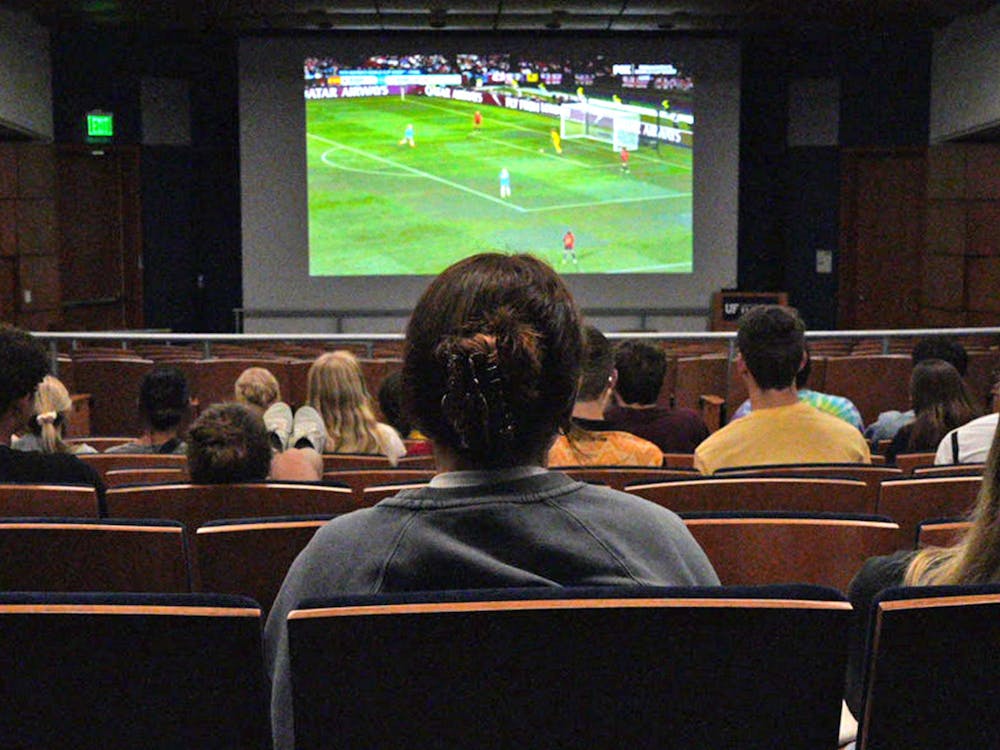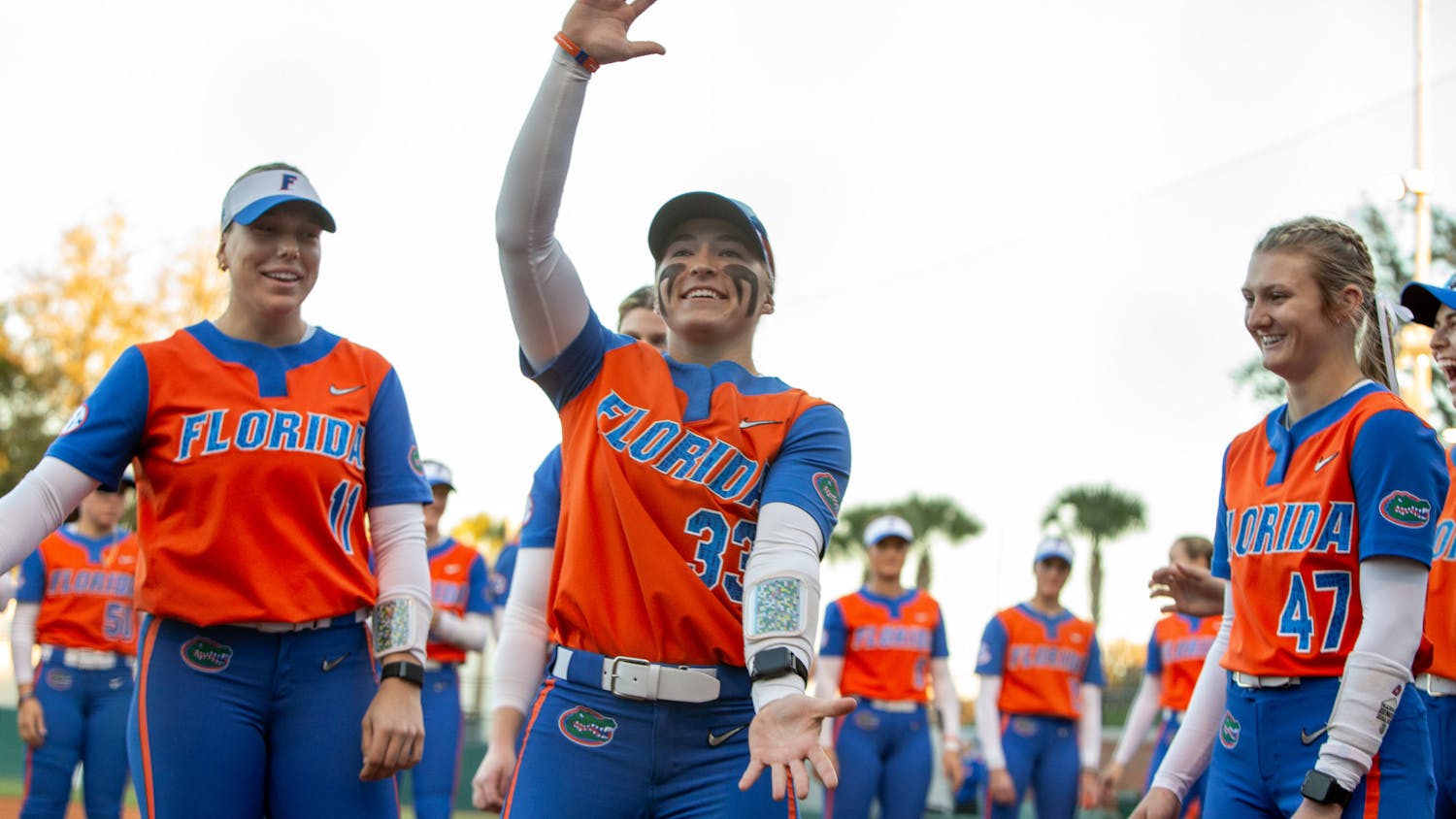For Maria Gonzalez, soccer is like breathing. The game is an integral part of her family, so she joined the crowd in the Reitz Union auditorium to watch the final match of the FIFA Women’s World Cup.
Soccer is the single most important thing to her family — both those who immigrated to the United States and those who still live in Mexico, said Gonzalez, a 21-year-old UF international studies junior.
“You have to give up so many important cultural things when you move away from your home country, but soccer is one tradition that can absolutely never die,” Gonzalez said.
To keep this tradition alive, Gonzalez joined about 40 others whose eyes were glued to the screen at 6 a.m. Aug. 21 to watch Spain beat England.
“The World Cup only happens every four years,” she said. “I feel like I have to take advantage of it and watch as much as possible because opportunities to watch soccer at such a high level are hard to come by in the U.S.”
Fans sported jerseys from teams and countries around the world, even those who weren’t in the World Cup to begin with.
Harry Garner, a 19-year-old UF computer science freshman and lifelong FC Dallas fan, took the opportunity to wear the bright red jersey that the team sports at home matches.
“A game is a game,” he said. “I’m here to watch some of the best soccer players in the world, so I wanted to wear my best jersey.”
Garner watched every U.S. women’s national team game and the final, joining the millions who have followed the U.S. women’s national team. The team’s opening match against Vietnam drew 6.26 million viewers, according to FOX Sports, making it the most watched soccer telecast in the U.S. since the men’s World Cup final last year.
Alexandre Ginez, who works at Brazilian Skills Soccer Academy in Gainesville, echoed the sentiment.
“We see students with families from all over Latin America here, but the one thing that unites them is this incredible passion for soccer,” he said in Portuguese. “Watching, playing, listening on the radio, it doesn’t matter. The defining feature of a Latin American, especially a Brazilian, is an unquenchable thirst for soccer.”
This thirst was seen in the 11.47 million viewers who caught Brazil’s opening match against Panama on TV Globo, one of Brazil’s main broadcasting networks.
Soccer isn’t exclusively a passion of Latin Americans, nor does every Latin American love the sport, Gonzalez said.
“Obviously you can’t generalize an entire group of people,” she said. “Some Mexicans hate soccer, and some Americans love it more than football or hockey or baseball. Overall, though, soccer is an integral part of the Latin American identity and I hold it in my heart always.”
When the winner had been decided and every viewer in the Reitz auditorium had experienced disappointment or triumph, everyone celebrated — even the England fans, like Taylor Aks, a 19-year-old UF business administration freshman.
“Obviously I wanted England to win,” Aks said, “but it was an amazing game and I’m thankful to have watched with all these passionate people.”
Contact Bea Lunardini at blunardini@alligator.org. Follow her on Twitter @bealunardini






